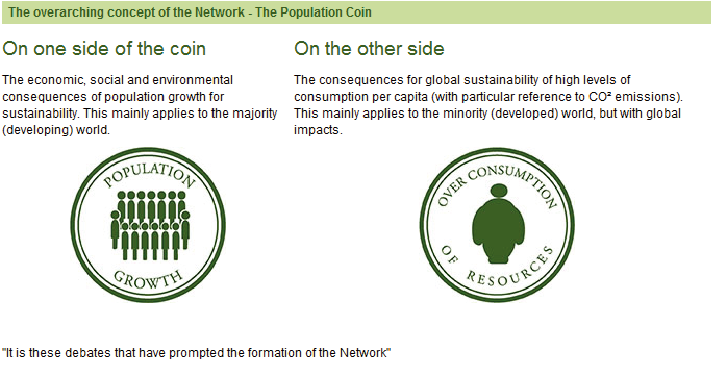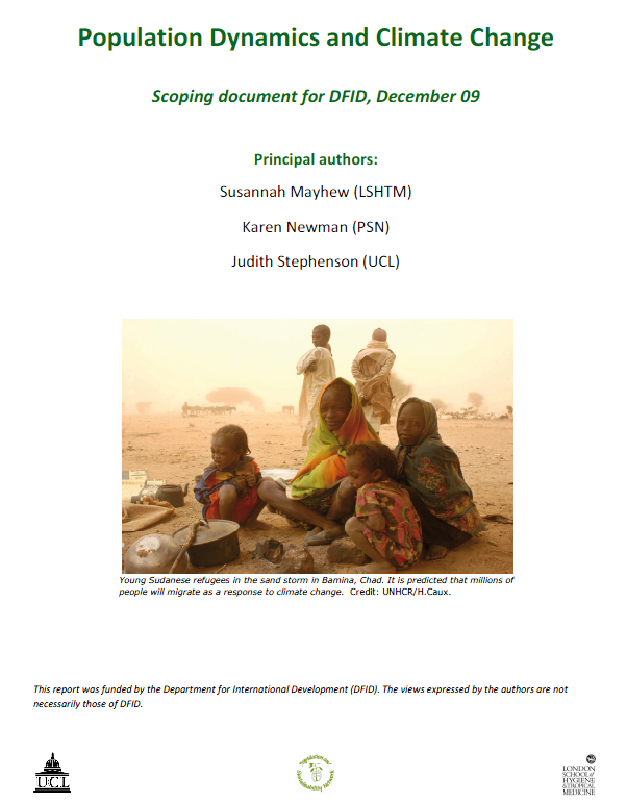Dear Aubrey,
How splendid to hear from you.
The Population and Sustainability Network is a strong advocate of Contraction and Convergence, embodying as it does an equitable way of addressing climate policy while acknowledging the developing world's right to develop.
PSN is in support of this proposal, and we are happy to add our name to your submission to the UNFCCC Executive.
With warm regards
Karen Newman
Co-ordinator
Population Sustainability Network
Contraction and Convergence
Climate change is driven, and its impacts are experienced, to different extents by different populations across the globe. Total emission figures mask a huge heterogeneity in per person energy consumption which varies widely both within national borders and between them. Equity, including equality of opportunities for development, must therefore be the central pillar around which climate change policy is developed. In response to these discrepancies, ‘Contraction and Convergence’ presents a framework in which finite bio-spherical capacity is equitably shared amongst all of the earth’s inhabitants, thus placing the importance of per capita emissions centre stage. This framework recognizes the right of the developing world to develop economically, and that their per capita emissions will rise as a result. On the other hand the emissions of the developed world will have to contract, with the overall objective of arriving at an equitable global per capita emission level. Population growth is fundamentally relevant to this model, since total population size will largely determine the cap at which total safe emissions can be set. Again the complexity of this issue is crucial to grasp: in the short term, it will be in the interests of individual countries to have large populations to capture as large a share of the global emissions as is possible. At the global level the reverse is the case; the larger the global population, the smaller the per capita global emission level will be.PSN will promote increased understanding of the links between population and climate change and advance approaches, such as contraction and convergence, which mirror the PSN ‘Population – Consumption Coin’ concept by recognizing the twin rights and responsibilities of the developed and developing worlds.
The Population and Sustainability Network
Contraction and Convergence
Climate change is driven, and its impacts are experienced, to different extents by different populations across the globe. Equity should therefore be a maintained as a guiding principle around which climate policy is developed. The model of contraction and convergence seeks to develop a framework in which the finite biospherical capacity is equitably shared amongst all of the earth’s inhabitants. Contraction and convergence describes a process whereby the high emitters of green house gases contract the rates at which they consume fossil fuel energy and eventually converge at a sustainable level with those who need to increase their consumption above what they currently consume in order to achieve satisfaction of necessary material and social needs. It has the advantage of explicitly recognizing the developing world’s right to develop, and the likelihood that their per capita emissions will grow as a result of this process, and of identifying a globally equitable way of managing this within the context of a global need to reduce carbon emissions. There is an important distinction to draw between the “luxury” and “survival” emissions produced between different populations and the patent and urgent need to address gross inequalities and widespread poverty experienced in many parts of the world. Addressing human development through stimulating economic activity and other means of improving human welfare will inevitably lead to increases in GHG emissions; there is hence an allowance for an increase in emissions from poor populations in the contraction and convergence model. The budget at which emissions should contract to is estimated to start at 450 CO2 ppm (at the time that Kyoto was created), which may have to be revised downwards towards 350 ppm, this however doesn’t account for any feedbacks triggered in the climate system which might mean that the budget would have to be set even more conservatively. The convergence date sets 2100 as an approximation to reach a globally equitable distribution of energy consumption, though efforts should be focused on the earliest date possible, as we move past the point of equity for equity’s sake towards the pursuit of equity for survival. Since this model is based on equilibrium between per capita and total rates of emissions, population is a critical factor influencing its achievability. Population projections are central for the subject of negotiation, and increasingly so if the medium UN 2050 projections, upon which the contraction allowance was crafted are jeopardized as a result of a crumbling base of global family planning services resulting in stalling rates of fertility decline in many countries. Population is the major denominator of this model, largely determining how hard it will be to achieve a globally feasible and equitable per capita emission figure; at the global level, a larger world population means a lower, more difficult to achieve, number. Similarly it could prove counter-intuitive if it became in the interest of nations to stimulate population growth in order to increase their share of the global emissions budget in an absolute sense.
Population Dynamics and Climate Change
Study for DFID December 2009
Susannah Mahew, Karen Newman, Judith Stephenson



